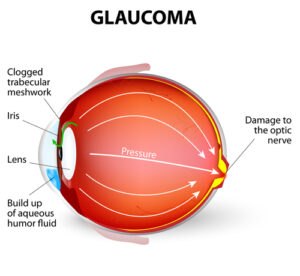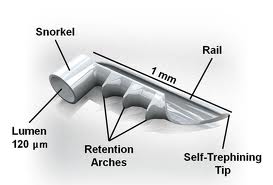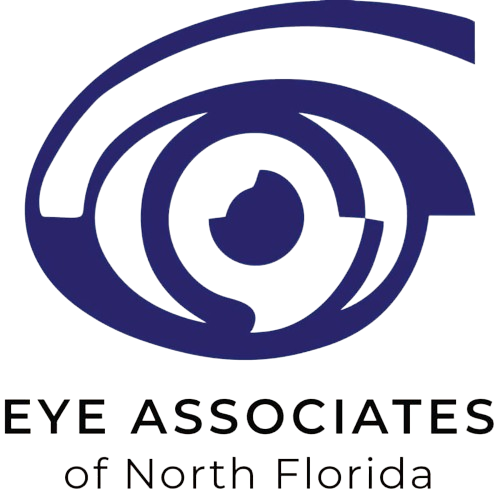Are There Different Kinds of Glaucoma?

Have you or someone you love recently found out you have glaucoma? You’re not alone because about three million Americans have this eye condition.
Yet, not every incidence or kind of glaucoma is the same. There are several different kinds, with varying causes and symptoms for each.
It is crucial to identify the exact type of glaucoma you have to treat it most effectively. Keep reading to learn more about the different kinds of glaucoma and how best to treat them!

What Is Glaucoma?
Glaucoma is an eye condition that damages the optic nerve. The optic nerve is an integral part of the eye that is responsible for connecting your vision to your brain. It carries visual information for processing so you can make sense of and understand the images you see.
The exact cause of glaucoma is unknown. However, several factors can increase the risk of developing it.
These include high eye pressure, older age, African American or Hispanic descent, and family history. One of the most frustrating things about glaucoma is that most people don’t realize they have it until vision loss has already occurred.
Vision loss due to glaucoma is entirely irreversible, which is why early diagnosis and treatment of this condition are so important. When diagnosed early on, patients can preserve their remaining eyesight.
Different Kinds of Glaucoma
There are many different kinds of glaucoma that you can develop. The one constant with any form of glaucoma is that it causes irreversible vision loss.
The two most common types of glaucoma are open-angle and closed-angle glaucoma. These affect millions of Americans every year.
Open-Angle Glaucoma

Open-angle glaucoma occurs when the location where your cornea and iris meet (called the drainage area) remains open, but the drainage canals fail to function correctly. Unable to carry fluid out of the eye because the trabecular meshwork does not work as it should, pressure builds up.
Many patients are unaware they have this type of glaucoma until their vision is affected and damage to the optic nerve has already set in.
Symptoms of open-angle glaucoma include:
- A gradual loss of peripheral vision, usually in both eyes
- Tunnel vision in the advanced stages
Closed-Angle Glaucoma
If the drainage area of the eye suddenly becomes blocked, it is considered closed-angle glaucoma. Closed-angle glaucoma differs from open-angle glaucoma in that damage occurs more quickly after pressure rises.
Closed-angle glaucoma is not as common as open-angle glaucoma. Blindness can occur if closed-angle glaucoma is left untreated.
Symptoms of closed-angle glaucoma include:
- Severe eye pain
- Nausea and vomiting (accompanying the severe eye pain)
- Sudden onset of visual disturbance, often in low light
- Blurred vision
- Halos around lights
- Red eyes
Low-Tension Glaucoma

With low-tension glaucoma, although optic nerve damage occurs, eye pressure remains normal. There is less understanding about how low-tension glaucoma develops.
Some experts believe patients have an abnormally sensitive optic nerve or reduced blood supply to the optic nerve. Although this form of glaucoma is less understood, it is not uncommon.
Pigmentary Glaucoma
Pigmentary glaucoma most commonly develops in young to middle-aged men. It occurs when pigment granules from the iris disperse within the eye.
They can accumulate on and in the trabecular meshwork, causing an increase in pressure. It’s possible for physical activities like jogging to stir up these pigment granules. The ophthalmologists at Eye Associates of Tallahassee can efficiently diagnose this type of glaucoma.
Pseudoexfoliative Glaucoma
Pseudoexfoliative glaucoma is a type of secondary open-angle glaucoma. Flaky dandruff-like material peels off of the outer layer of the lens within the eye.
The material then accumulates in the angle located between the cornea and iris. Where this material collects can clog the eye’s drainage system, causing an increase in pressure.
Pseudoexfoliative glaucoma is most common in those of Scandinavian descent. Treatment usually involves taking medications or undergoing a surgical procedure.
Traumatic Glaucoma
Traumatic glaucoma can occur if you’ve had an injury to the eye, causing secondary open-angle glaucoma. It does not always happen immediately after the trauma and can occur years later.
Both blunt injuries and those that penetrate the eye can cause traumatic glaucoma. Patients with severe nearsightedness, infection, or previous injury or surgery can be more susceptible to developing traumatic glaucoma.
Neovascular Glaucoma
Neovascular glaucoma stems from other conditions, most commonly diabetes. A spike in eye pressure happens when new blood vessels block the drainage of the eye’s fluid through the trabecular meshwork. Unfortunately, neovascular glaucoma can be challenging to treat.
How to Treat Glaucoma

Glaucoma treatment often begins by taking eye drops to help lower intraocular pressure levels. There are a variety of eye drops available that your eye doctor can prescribe, depending on your individual needs.
They can improve fluid drainage or decrease the production of fluid. On occasion, multiple types of eye drops are prescribed.
Advancements in laser technology have made it easier than ever to treat glaucoma. Argon laser trabeculoplasty and selective laser trabeculoplasty (SLT) are two laser treatment options. Both procedures help drain fluids out of the eye to reduce pressure in patients with open-angle glaucoma.

Another option is the iStent. The iStent is a surgical device that decreases eye pressure.
It does so by creating a permanent opening in the drainage canals. As the smallest medical device ever approved by the FDA, patients can’t see or feel it.
Tube shunt surgery may be recommended if the risks associated with other treatment options are too high for a particular patient. This outpatient procedure implants a flexible drainage device in the eye.
Early detection is the key to successfully treating glaucoma and maintaining your vision. Are you searching for the best option to treat your glaucoma and preserve your eyesight?
Schedule an appointment at Eye Associates of Tallahassee in Tallahassee, FL, today!







